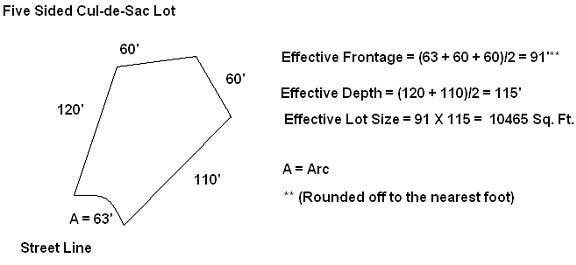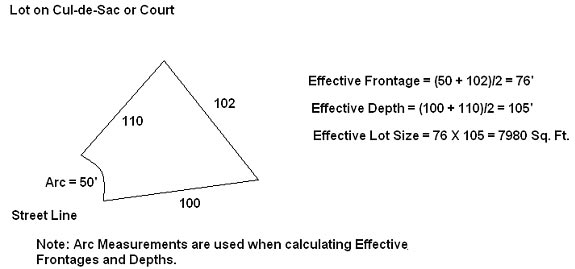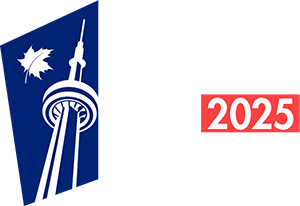How we assess residential properties
To assess your residential property, we analyze the sales of similar properties that have sold in your area. Based on the sales information, there are five major factors that generally account for your property’s assessed value.
Overview of factors affecting your property value
 There are five key factors that affect your property's value:
There are five key factors that affect your property's value:
- Age of the buildings on the property.
- Total square footage of living area.
- Location of your property.
- Size of your lot.
- Quality of construction.
Other factors that can affect your property's value include:
- primary structures
- secondary structures
- site features
- structural features
Five key factors that affect your property's value
1. Age of the buildings on the property
The value of your property is influenced by the age of your house and other structures. While the house may have been built in a given year (defined as the "Actual Year"), major renovations or additions may change the Effective Year of its construction.
2. Total square footage of the living area
We measure the exterior of your home to determine the total area of the inside of the building. This does not include your:
- basement
- deck
- porch
- garage
If you have a room that is open to the second floor, the area of the open space is included with the second floor area.
If you have more than two floors, the assessment will include the third and upper floors based on the home's exterior measurements and interior measurements where available.
3. Location of your property
Your home's neighbourhood and market area affect what others would be willing to pay for it if you sold it.
Market area
Your market area is affected by the same factors that influence market areas similar to yours. We use four types of market areas to develop our assessments.
- An Urban Market Area is a city or a cluster of towns.
- A Rural Market Area is a small town or village.
- A Waterfront Market Area is affected by water access. Homes here are usually seasonal or recreational, or you may be a year-round resident.
- A Condominium Market Area is a high-rise or townhouse condo development.
- Large urban centres: We analyze condominiums in urban areas as separate communities, independent from each other.
- Smaller urban or rural centres: Condominiums in these areas are clustered together and we make adjustments for the architecture or style of the condominium.
Locational neighbourhood
Neighbourhoods tend to reflect a combination of influences, and people choose to live in a given area based on similar desirability. For example, people of a certain income who want more space may choose to live in sub-urban or rural lots/homes, while people with the same income who want more "city" options may choose smaller urban lots/homes.
Sub-neighbourhood (homogeneous neighbourhoods)
Homogeneous neighbourhoods are geographic areas within a locational neighbourhood. They may be defined by natural, man-made or political boundaries and are established based on common use of land and the types and ages of buildings. To create the boundaries of a homogenous neighbourhood, we look at municipal servicing maps and zoning maps and consider:
- natural boundaries (e.g. ravines, topography, major streets)
- political boundaries (e.g. wards, polls, constituencies)
- similarity of housing stock (e.g. quality, size, age, type of housing)
- similarity of municipal servicing (e.g. sewer, water, power)
- similarity of physical environment (e.g. access to public transit, proximity to schools, libraries, parks, shopping centres)
- historic significance (e.g. designated heritage neighbourhood)
- desirability
- similar stages of stability, growth or decline
- similar marketability
- similar zoning
Neighbourhoods are dynamic, and each has its own life cycle (e.g. period of growth, stability, decline and revitalization). We regularly review and update our information to reflect changes that impact the neighbourhood, such as municipal zoning changes or emerging incompatible uses or development.
4. Size of your lot
We calculate the area of your lot by multiplying the frontage by the depth. We take these measurements from the property’s legal description in one or more of the following:
- Parcel Register of the Land Registry Office
- Land Transfer Tax Affidavit
- Land Transfer Tax Statements of the Land Titles Office
Actual measurements and effective measurements
Actual Frontage and Actual Depth are usually described on a registered survey. These are multiplied to describe the area, and these three measurements are usually used to describe residential lot size in an urban non-waterfront community.
Your lot may include:
- The deeded or total lot area
- Flooded and unflooded areas
- Water lots (land under water)
Actual frontage:
- The frontage is the portion of the lot that abuts (is directly beside) the roadway
- If the frontage abuts a curved roadway, the arc is measured
- If the property is a corner lot, the shortest side or the municipally addressed side of the lot is the frontage
Actual depth:
- The depth is normally the distance from the front boundary of the lot to the rear boundary of the lot
- If the opposing depths of the lot (i.e. side boundaries) are not exactly equal, the depth will not usually be shown on the assessment notice
Actual area:
- The lot size described in either acres or square feet
Effective frontage, effective depth and effective area
When your property has an irregular shape, we calculate effective frontage and effective depth to be able to compare your lot to a standardized lot size.
How we calculate effective frontage and effective depth
- Effective frontage is calculated by averaging the frontage and the rear lot line
- Effective depth is calculated by averaging the sidelines
- We calculate effective lot size by multiplying the effective frontage and the effective depth
Example #1

Example #2

Example #3

Example #4

Units of measurement
MPAC measure sites in acres (A) or sq. ft. (f).
Note: In rural areas, land is measured in total acreage, which makes it unnecessary to calculate effective frontage and effective depth.
5. Quality of construction
The construction quality of your home is affected by materials, architecture, and the workmanship used in building it. Building standards and codes have changed over the years, so we have different methodologies to identify different levels of quality.
Quality classifications
There are 17 full and half-quality classifications. They range from Class 1, which is the lowest, to a Class 10, which describes the highest degree of quality. Class 6 represents the common standard of construction for the time a home was built.
We use half classes when your primary or main structures meet the standards of one quality class with some of the standards of a higher level.
Quality Class 1
General description
- Simple rectangular floor plan
- No foundation or basement
- Interior and exterior finishes of minimal quality
- No interior walls or ceilings
- Generally one room and no partitioning
Exterior
- Typically, sidings are utility-grade wood
- Roofing is usually rolled roofing
Interior
- Utility-grade millwork, painted
- Usually painted floors
- Minimal outlets and electrical service
- No kitchen
- No closet space
Bathrooms
- No bathroom
Quality Class 2
General description
- Simple rectangular floor plan
- Built on masonry piers or a wood-post foundation
- No basement
- No interior walls or ceilings
- Interior and exterior finishes of minimal quality
Exterior
- Typically, sidings are utility-grade wood, asbestos or Insulbrick
- Roofing is usually low-grade asphalt shingle or rolled roofing
Interior
- Utility-grade materials, painted
- Minimal outlets and electrical service
- No closet space
Bathrooms
- No bathroom
Quality Class 3
General description
- Simple rectangular or square floor plan
- Built on masonry piers
- No basement
- Interior and exterior finishes of minimal quality
- Small rooms with minimal partitioning
- Generally constructed of the most economic materials available
Exterior
- Sidings are usually utility-grade wood, vinyl, asbestos and Insulbrick sidings
- Roofing is usually low-grade asphalt shingle or rolled roofing
Interior
- Utility grade finishes and materials
- Walls are lined and ceiled with old-style fibreboard or low-grade drywall and generally uninsulated
- Flooring is generally linoleum, vinyl or asbestos tiles or softwood
- Cabinets are inexpensive softwood or painted plywood, with low-grade plastic laminate countertops
- Minimal outlets and electrical service
- No closets or very small closet(s)
Bathrooms
- No bathroom or one bathroom of minimal quality
Quality Class 4
General description
- Simple floor plan
- If foundation exists, typically block but can also be post-and-pier
- Interior and exterior finishes of minimal quality
- Small rooms with no hallways and minimal partitioning
Exterior
- Sidings are wood, vinyl, asbestos, aluminum, stucco or Insulbrick
- Roofing is usually low-grade asphalt shingle or rolled roofing
Interior
- Low-grade finishes and materials
- Walls are usually panelling, drywall or nailed acoustic tiles
- Flooring is low-grade linoleum, rubber-backed carpet, vinyl or asbestos tiles or softwood
- Cabinets are inexpensive softwood or painted plywood, with plastic laminate countertops
- Minimal outlets and electrical service. No closets or small closet spaces
Bathrooms
- Typically one bathroom
Quality Class 5
General description
- Simple floor plan with interior and exterior finishes of minimal quality
- Basic design
- Rooms tend to be small and connected with a narrow hallway
- May have basement or crawl space
Exterior
- Sidings are wood, vinyl, asbestos, aluminum, stucco or Insulbrick with block construction
- Exterior may have narrow eaves
- Some homes have brick veneer at front and/or rear elevations
- Roofing is typically low-grade to standard asphalt shingle
Interior
- Basic grade materials with few finishes and little-to-no ornamentation
- Walls are typically panelling, drywall or acoustic tiles
- Flooring is generally low-grade linoleum, vinyl tiles or softwood
- Cabinets are inexpensive with low-grade laminate countertops
- Limited closets
Bathrooms
- Typically one bathroom
Quality Class 6
General description
- Average design type with plain detailing and adequate windows and doors
- Average quality materials and workmanship evident in interior and exterior features and finishes
Exterior
- Sidings are brick, wood, vinyl, aluminum and/or stucco
- Average quality windows and doors with adequate trim
- Roof typically standard asphalt shingle
Interior
- Standard-grade materials and finishes
- Walls are typically drywall, plaster or panelling
- Flooring is standard-grade broadloom, parquet, linoleum, vinyl tile or hardwood strip
- Standard ceramic tiles sometimes used in small areas
- Ceilings are usually drywall, plaster or acoustic tile
- Cabinets are standard grade. Adequate cabinets and closet space
Bathrooms
- One to two full bathrooms, or one full and one half bathroom. Average quality materials
Quality Class 7
General description
- Materials and workmanship is generally higher quality than other standard classes
- Additional customized features
- Design and floor plan more varied in nature
- Some exterior architectural features
Exterior
- Sidings are cedar, aluminum, vinyl, stucco or brick
- Possibly multiple rooflines, wide aluminum soffit and fascia, picture or bay windows
Interior
- Quality materials and above average finishes
- Functional floor plan
- Flooring is generally good quality broadloom, linoleum, vinyl tile or hardwood
- Ceramic tiles maybe used in the kitchen, bathroom and entrance areas
- Cathedral ceilings possible in some areas
- Kitchen may have small island
- Good quality cabinets
- Possibly built-in shelving, wainscoting, and large bedroom closets
- Master bedroom may have a walk-in closet
Bathrooms
- Typically, two full bathrooms (one is usually an ensuite bathroom) and one half bathroom
Quality Class 8
General description
- Custom home, architecturally designed
- Good quality materials and workmanship used throughout
- Functional floor plan
- Particular attention to details on both interior and exterior finishes
- Spacious interiors and closets
- Increased separation of living and sleeping quarters
Exterior
- Typically brick, stone, stucco or siding in various combinations
- Roofing usually cedar shingles or shakes, clay tiles or good quality asphalt shingles
- Front entrance may have oversized door(s) with transom or skylight(s)
- Multiple rooflines
- Windows and doors are above-average quality or custom-designed and built
Interior
- Quality materials and above average finishes
- Good quality broadloom, hardwood, slate, marble or quality ceramic or quarry tiles
- Often has above average ceiling heights, open concept, and vaulted or cathedral ceilings
- Grand staircase(s) for multi-level homes
- Custom-built kitchen that generally has hardwood cabinets, granite or marble countertops and larger island with possible plumbing
- Master bedroom usually has sitting area, large ensuite bathroom and large walk-in closet(s)
- May have built-ins, wainscoting or wood panel finishes
- May have one or more sunroom, parlour or den
Bathrooms
- Typically one ensuite bathroom, two common bathrooms and one half bathroom
- Master bathroom usually has higher degree of finish than the other bathrooms
- Good quality vanities throughout
Quality Class 9
General description
- High quality materials and workmanship used throughout
- Architecturally and custom-designed to owner specifications
- Particular attention given to interior and exterior finishes
Exterior
- Typically good quality brick, stone, limestone or stucco
- Roofing is cedar shingles or shakes, slate, or clay tile with copper flashing, downspouts and eaves
- Roof often has multiple levels with architectural features
- Custom-built oversized windows
- Custom-designed entrance with oversized door(s)
- Ornate trim and mouldings
Interior
- Premium quality materials and finishes
- Good quality broadloom, hardwood, slate, marble, quality ceramic, quarry or mosaic tiles
- Above-average ceiling heights, open concept, and vaulted or cathedral ceilings
- Grand staircase(s) for multi-level homes
- Built-in features and valances
- Spacious interiors with specific purpose rooms such as library, gym or theatre room
- Specifically designed, custom-built kitchen that generally has many hardwood cabinets and built-in features
- Countertops are generally premium granite or marble
- Kitchen has custom-designed island
- Bedrooms generally have sitting areas, large ensuite bathroom and large walk-in closet(s)
Bathrooms
- Typically more than one ensuite bathroom, other full bathrooms(s) and half-bathroom(s)
- Premium quality custom-designed cabinets and fixtures
Quality Class 10
General description
- Architecturally and custom-designed to owner specifications
- Highest quality materials and workmanship with exceptional detailing used throughout
Exterior
- Typically the highest quality stone, limestone or brick
- Roofing is cedar shingles or shakes, slate, or clay tile, with copper flashing, downspouts and eaves
- Roof usually has multiple levels with architectural features. Custom-built oversized windows
- Architecturally designed entrance with oversized door(s) with exquisite detail
- Ornate trim and mouldings
Interior
- Exceptional quality materials and finishes used throughout
- Flooring is highest quality broadloom, hardwood, slate, marble, quality ceramic, quarry or mosaic tiles
- Usually above-average ceiling heights, open concept and vaulted or cathedral ceilings
- Grand staircase(s) for multi-level homes
- Built-in features. Spacious interiors with specific purpose rooms
- Custom-designed, gourmet kitchen with many hardwood cabinets and built-in features
- Countertops generally premium granite or marble
- Kitchen has custom-designed island
- Bedrooms generally have sitting areas, large ensuite bathroom and large walk-in closet(s)
Bathrooms
- Typically has more than one luxurious ensuite bathroom, numerous additional full bathroom(s) and half-bathrooms(s)
- Superior quality custom-designed cabinets and fixtures
Other factors that can affect your assessment
We classify all structures on your property with codes that describe the design or type of structure and its features.
Residential structure codes describe the type of primary structure (usually your home), and any secondary structures such as a garage or in-ground swimming pool.
- NOTE: Secondary structures are valued at a per-square-foot rate or a flat-dollar adjustment based on each structure's type.
Residential site feature describe specific site details such as whether there is a railway or a sports field nearby, or what the traffic patterns are in the area.
Residential structural features describe key details about your home, such as the number of bathrooms, or whether you have central air or a finished basement.
Property inspections of your home
Overview
In-person property inspections help us ensure that we have up-to-date information about your home, and that our assessment of its value is as accurate as possible. We may send a property inspector to your home if:
- A building permit has been issued by your municipality because your home has been newly built, or has undergone renovations/additions
- There is a sales review because you recently purchased your residential property
- We're carrying out a neighbourhood inspection, inspecting all the homes in an area. This happens when:
- There have been many sales, and the sale prices are higher or lower than the existing assessments
- We haven't inspected the neighbourhood for many years
- We have experienced a high number of Requests for Reconsideration, or appeals to the Assessment Review Board in the neighbourhood
- The area is undergoing a transition
- You have submitted a Request for Reconsideration
- You have filed an appeal with the Assessment Review Board
The property inspection visit
If our inspector has access to your property and our records match the inspector’s observations, you don’t need to do anything further. If the inspector has other questions, they will contact you.
If you are not available, or don’t respond to calls, mail or notices from us, or you do not allow the inspector to enter your home, we may have to estimate your home’s interior characteristics based on information our inspector can observe from the exterior.
How your assessment affects your taxes
We provide your property’s assessment information to your municipality or local taxing authority. They then use that information to calculate your property taxes.
For more information, visit our page on how property values impact your property taxes, or watch our short video on how your property tax is calculated.
Visit AboutMyProperty to learn more about how your property was assessed and compare it to others in your neighbourhood.
Learn more about the information we share with taxpayers, municipalities and other stakeholders
How to file a Request for Reconsideration




